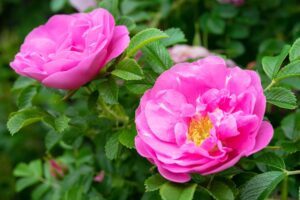Wrinkled Rose

Wrinkled Rose is a species with an erect bushy habit native to Asia, China, Japan, Korea that can reach a height of sixty centimeters. It has also found diffusion in Europe and North America where it is cultivated in particular for ornamental and decorative purposes. As it is very robust, it can withstand very low temperatures, but in winter it will still be advisable to mulch the roots in order to protect them from any frost.
It is advisable to plant in bright areas, although it also resists well in shady areas that receive only a few hours of sun a day
GROUND
Wrinkled Rose is easy to cultivate as it is robust and wild, it is not very demanding regarding the type of soil, it can resist and grow even in poor and arid soils; however this prefers a soil rich in organic substances, rather deep and well drained.
FLOWERS AND FRUITS
Wrinkled Rose blooms from May to October. The flowers can develop singly or in groups and can have a diameter of up to about nine centimeters. They have a very characteristic, sweet and delicate fragrance. Rosa rugosa berries are edible and very useful for making jams.
USE AND HEATHCARE CONTENT
The botanical description of roses, both spontaneous and cultivated, is omitted as their attractive appearance is known to all, so much so that they are called “flower queens”. The interest in the fruits of this species is limited to the possibility of obtaining a jam with a particular flavor, very appreciated and widespread in some European countries: an experiment to be attempted also for the ease of finding the fruits present in all gardens. Other uses concern flowers, both for the production of perfumes, and for their medicinal qualities, such as refreshing, laxative, astringent, calming and digestive. Perfect for fragrant hedges (no higher than 1.50 meters), in embankments and flower beds.
PRUNING AND COLTURAL CARE
This type of rose has a very vigorous development, during the spring season, therefore, pruning can be carried out to contain its excessive growth, even in a fairly drastic way. If you decide to grow this rose in a pot, it is good to place a layer of about 8 cm of expanded clay on the bottom of the pot to avoid any water stagnation that can lead to mold and in the most serious cases to root rot with the consequent death of the plant.
